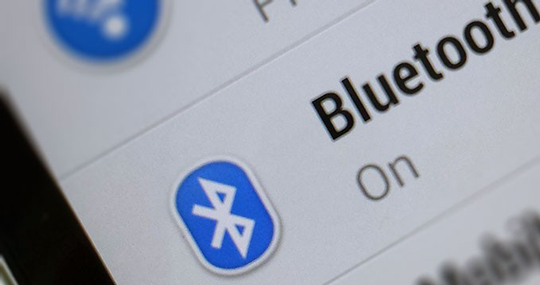The Bluetooth technology is not new. As a fact, millions of devices today are making use of this technology. At present, the Bluetooth technology is being leveraged in a mobile app, and helps make the device and human interaction seem more natural. Take the example of iBeacon that make use of the “Bluetooth LE” technology for sending data to mobile applications at fixed time intervals, it is utilized by retail outlets for delivering a personalized experience to customer’s.

The biggest benefit of coupling the Bluetooth technology with mobile apps is that it enables an app to utilize the capability of wireless connectivity. The majority of iOS and Android powered devices supports Bluetooth connectivity, giving app developers the ability to build highly innovative mobile solutions with native features such as Bluetooth profiles. This enables real-world devices to interact with mobile apps and even allows those devices to have control over apps remotely. For example, the Bluetooth technology when added to a wearable device, helps in connecting that device to a mobile app.
The above discussed factors clearly indicate how the Bluetooth technology will prove to be a promising trend in the distant future as well. However, to make use of the Bluetooth technology in your mobile app, you’ll first need to become familiar with Bluetooth Profiles.
Bluetooth Profile – An Insight
A Bluetooth profile is basically a specification that helps establish a connection between Bluetooth-enabled devices. To be more specific, in order to establish a wireless connection between a Bluetooth device and a mobile app that support Bluetooth, a profile is first scanned by the device. And the information is transmitted only when the profile of one Bluetooth device matches with the profile of partner device.
However, multiple mobile devices provide support for different Bluetooth profiles. This means that a mobile application built on iOS will support only those Bluetooth profiles that are compatible with iOS devices. Thus, making your Bluetooth technology support mobile app development, you’ll need to add the Bluetooth profile in the mobile app.
Let us have a look at all of the Bluetooth profiles that some of the most popular mobile OS supports:
| Android | Windows | iOS |
|---|---|---|
| A2DP | A2DP 1.2 | A2DP |
| AVCRP | AVCRP 1.4 | AVCRP 1.4 |
| HFP | HFP 1.5 | HFP 1.6 |
| HDP | PBAP 1.1 | PBAP |
| MAP | OPP 1.1 | MAP |
| HRP | OOB | PAN |
| - | - | HID |
Things To Consider When Developing a Bluetooth-enabled App
One effective and quickest way to initiate the process of developing a Bluetooth-enabled app requires choosing a development platform. Usually platforms such as SDKs (Software Development Kits), HDKs (Hardware Development Kits) or the combination of these two platforms is used to develop a mobile app that supports the Bluetooth technology.
A few development platforms help in developing a cross-platform software on a generic desktop computer or laptop, which is later downloaded into a prototype for the product you want to build. Some other platforms come with remote debugging capabilities that help in controlling the product hardware using a desktop or a laptop.
Remember that developing a Bluetooth-enabled application can be overly complex. In that case, you should avoid getting to know about all the little and internal details about configuring the hardware, or transmitting messages, etc. And thus, select an SDK that offers only the low-level details to configure the product hardware. Such kind of SDK will enable you to handle the app development process and issues associated with it.
Keep in mind that developing an app for a technology such as “Bluetooth LE” is an ideal choice for dealing with complicated app development using the Bluetooth technology. That’s because, the Bluetooth profiles and services that are created to be used with low energy Bluetooth technology are built using the Generic Attribute Profile (GATT). The benefit of GATT is that it helps exchange data from one device to another using a standardized way, allowing each profile to work in a similar manner.
Lastly, you can get inspired to make your own Bluetooth mobile app by referring to already available Bluetooth-enabled apps in the market. For instance, the BlueSense app will give you inspiration to build an app that enables to render control from your mobile device over the audio infotainment system of a car.
Wrapping Up!
Most of the devices – be it Android, iOS or any other – contains Bluetooth functionality that enables to share data to any other Bluetooth-enabled device. However, the use of Bluetooth technology is not just limited to a mobile device only, and is also being used in a mobile application. Combining the power of Bluetooth with mobile apps help in exchanging the data between a device to a mobile app even without establishing a network connection.
This post will provide you more in-depth view on the benefits you get by coupling Bluetooth technology with mobile apps, and considerations you need to take into account while developing a Bluetooth-enabled app.
Author: Addison Cohen is a mobile app developer working with Appsted Ltd, the leading mobile applications development services provider which delivers most comprehensive mobile application solutions. He loves sharing latest information on mobile technologies like iOS, Android development processes.

